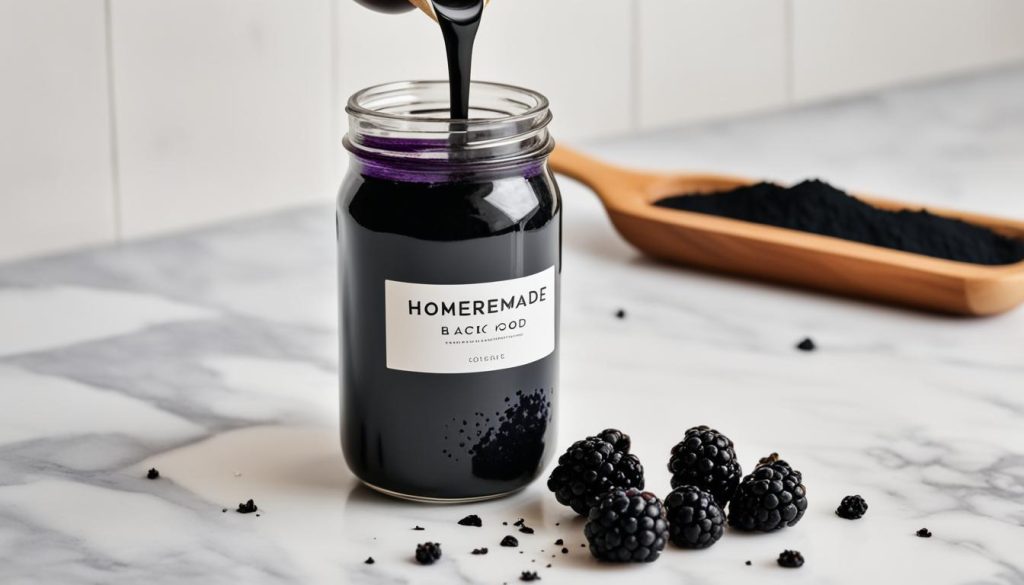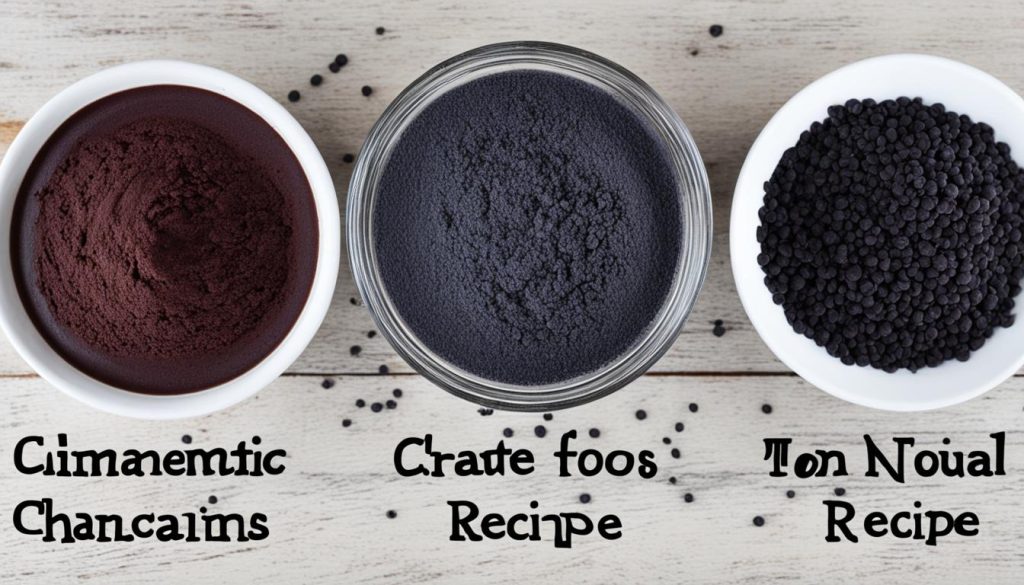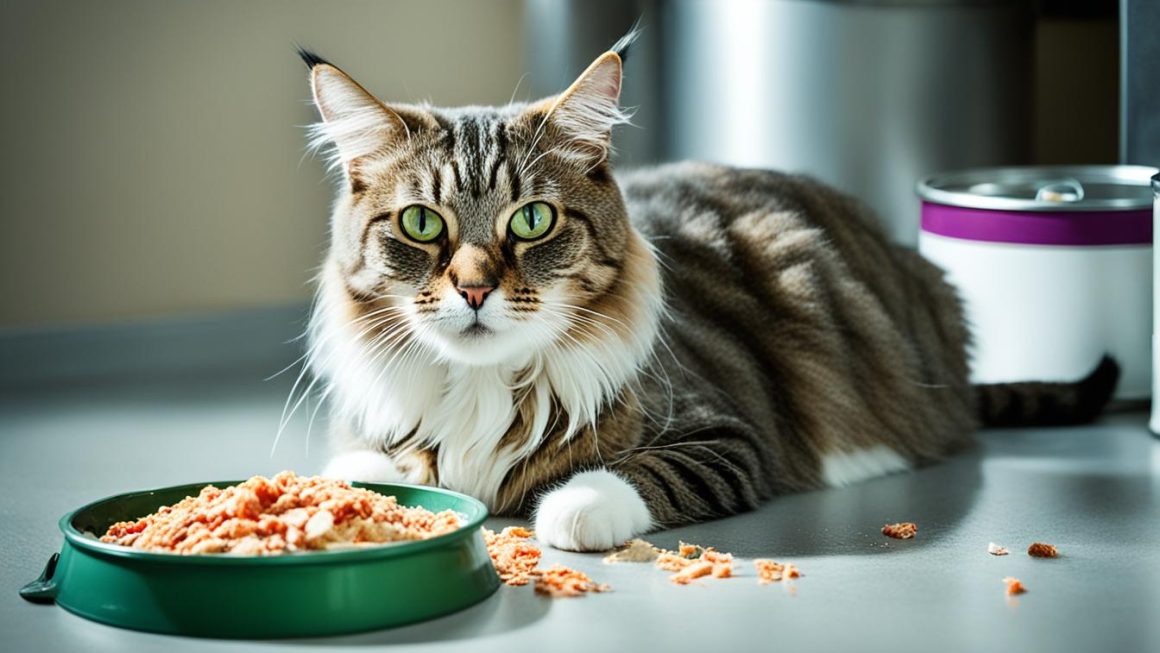Are you tired of using artificial food coloring that contains harmful chemicals in your culinary creations? Making your own natural black food coloring at home is a simple and healthier alternative. By using natural ingredients and following a straightforward recipe, you can achieve a deep and vibrant black color that will elevate the visual appeal of your dishes and desserts.
Creating your own black food coloring allows you to have control over the ingredients used and ensures a safer option for you and your family. Plus, making black food coloring at home is quick, easy, and cost-effective. With just a few steps, you can achieve a true black shade that will add elegance and sophistication to any recipe.
Key Takeaways
- By making your own black food coloring at home, you can avoid the harmful chemicals found in store-bought options.
- Natural black food coloring is made from plant-based ingredients, making it a healthier choice for you and your family.
- The key to achieving a true black color is using a combination of blue, green, and red food coloring.
- Experiment with natural ingredients like squid ink, cocoa powder, and activated charcoal to find the perfect black food coloring for your recipes.
- Remember to store your homemade black food coloring properly to maintain its freshness and quality.
Why Use Natural Food Coloring?
Using natural food coloring offers a range of benefits that make it a better choice over synthetic dyes. Made from plant-based ingredients, natural food coloring does not contain harmful chemicals, ensuring a safer and healthier option for you and your family. Not only does it provide vibrant and appealing colors, but it also comes with several health advantages.
Better for your health
Natural food coloring has been linked to various health benefits. Unlike synthetic dyes, which have been known to cause hyperactivity and other negative effects, natural food coloring is not associated with these issues. By opting for natural food coloring, you can reduce the risk of triggering food sensitivities, especially in children.
Free from artificial additives
“Natural food coloring is free from artificial additives and chemicals, providing a clean and pure coloring option.”
Homemade food coloring allows you to have complete control over the ingredients used, ensuring that you avoid artificial additives found in many store-bought options. By choosing natural food coloring, you can enhance the quality of your dishes and desserts, making them a safer and more enjoyable experience for everyone.
By making your own homemade food coloring, you can create unique and vibrant colors without compromising on your health. Experimenting with different natural ingredients allows you to unleash your creativity and add a touch of natural beauty to your culinary creations.
| Advantages of Homemade Food Coloring | Health Benefits of Natural Food Dyes |
|---|---|
|
|
Tips for Achieving a True Black Color
While natural colorants may not produce a jet-black color as easily as artificial dyes, there are a few tips to help you achieve a true black shade.
The key is to use a combination of blue, green, and red food coloring. Start with equal parts of each color and adjust the ratio as needed to create the desired shade.
It’s important to use gel or paste food coloring rather than liquid, as they are more concentrated and provide better color intensity.
Additionally, keep in mind that a small amount of black food coloring goes a long way, so start with a small quantity and gradually add more if needed.
Tips for Achieving a True Black Color:
- Use a combination of blue, green, and red food coloring.
- Start with equal parts of each color and adjust the ratio as needed.
- Use gel or paste food coloring for better color intensity.
- Start with a small amount and gradually add more if needed.
By following these tips, you can create a deep and vibrant black color for your culinary creations.
| Tip | Description |
|---|---|
| 1 | Use a combination of blue, green, and red food coloring. |
| 2 | Start with equal parts of each color and adjust the ratio as needed. |
| 3 | Use gel or paste food coloring for better color intensity. |
| 4 | Start with a small amount and gradually add more if needed. |
Natural Ingredients for Black Food Coloring
When it comes to creating black food coloring, there are several natural ingredients that can be used as alternatives to synthetic dyes. These plant-based options not only provide a deep black color but also offer a range of flavors and textures to enhance your culinary creations. Experimenting with these natural ingredients will allow you to find the perfect black food coloring that suits your preferences and recipe requirements.
Squid Ink
Squid ink is a popular choice for achieving a deep black color. It lends a rich, dark hue to your dishes and can be used in both sweet and savory recipes. However, it is worth noting that squid ink has a distinctive briny flavor, which may not be suitable for all dishes. For example, it pairs well with seafood-based recipes but may alter the taste of desserts or light dishes. If you’re a fan of the flavor and looking for an authentic touch, squid ink can be an excellent choice for your black food coloring needs.
Cocoa Powder
If you prefer a more neutral taste, cocoa powder labeled as “black” or “ultra Dutch processed” can provide a nearly black color to your culinary creations. This type of cocoa powder has a higher level of alkalinity, resulting in a darker color. It is commonly used in baking and can be incorporated into a wide range of recipes, including cakes, cookies, and desserts. The rich, chocolatey flavor of black cocoa powder adds a delicious element to your creations, making it a go-to option for many baking enthusiasts.
Activated Charcoal
Activated charcoal is a natural ingredient known for its detoxifying properties, but it can also be used as a black food coloring alternative. It is available in powdered form and can create a deep black color in your dishes. However, it’s essential to use activated charcoal with caution, as it may interfere with certain medications and absorb essential nutrients if consumed in large amounts. If you decide to use activated charcoal as a natural black food dye, start with small quantities and gradually increase as necessary while considering any specific dietary or medical requirements.
These natural ingredients offer unique flavors and characteristics that can elevate your dishes and provide a truly black color. By experimenting with squid ink, cocoa powder, or activated charcoal, you can create black food coloring that not only looks visually appealing but also adds an exciting twist to your culinary creations.
Homemade Black Food Coloring Recipe
If you’re looking to create a stunning black color for your culinary creations, making your own homemade black food coloring is a simple and rewarding process. By following a few easy steps, you can achieve a deep and vibrant black shade that will add elegance and sophistication to your dishes. Here’s a DIY black food coloring recipe that you can easily recreate at home:
- In a small bowl, mix equal parts of blue, green, and red food coloring. This combination of colors will help you achieve a true black shade.
- Start with small quantities of each color and gradually adjust the ratio as needed to reach the desired intensity of black.
- It’s important to use gel or paste food coloring instead of liquid, as they are more concentrated and provide better color intensity.
- Once you have achieved the desired black shade, you can mix it into your batter, frosting, or any other food you want to color.
- Remember that a little goes a long way with black food coloring, so start with a small amount and add more if needed.
With this homemade black food coloring recipe, you have full control over the ingredients used, ensuring a natural and healthier option for coloring your dishes. Whether you’re baking a cake or preparing a savory dish, this recipe is an easy and effective way to achieve a beautiful black color.

Benefits of Homemade Food Coloring
Making your own food coloring has several benefits. By using natural ingredients, you can avoid the harmful additives and chemicals found in many store-bought options. It also allows you to customize the shades and intensities of your colors, giving your culinary creations a unique and personalized touch. Additionally, it can be cost-effective as you can create a variety of colors with just a few ingredients.
| Benefits of Homemade Food Coloring | |
|---|---|
| 1. Avoids harmful additives and chemicals | |
| 2. Customizable shades and intensities | |
| 3. Cost-effective |
Storing Homemade Black Food Coloring
If you have leftover homemade black food coloring, it’s important to store it properly to maintain its freshness and quality. Here are a few tips on how to store your homemade black food coloring:
- Option 1: Cling film
If you have a small amount of black food coloring left in a bowl, you can cover it with cling film to prevent air exposure. This will help keep the food coloring fresh for a few days. - Option 2: Airtight bottle
Another option is to transfer the black food coloring into a clean, small bottle with a lid. Make sure the bottle is airtight to preserve the color. This method is especially useful if you have a larger quantity of black food coloring leftover.
Regardless of the storage method you choose, it’s ideal to store your homemade black food coloring in a cool and dark place. The refrigerator is a suitable option as it helps maintain the quality and color of the food dye.
It’s also essential to check the expiration date on your gel food coloring tubes to ensure that they are still fresh and suitable for use.
Properly storing your homemade black food coloring will allow you to enjoy its vibrant color and quality for future culinary creations.
| Storage Method | Benefits |
|---|---|
| Cling film | – Protects the food coloring from air exposure – Convenient for small quantities |
| Airtight bottle | – Preserves the color of the food coloring – Suitable for larger quantities |
| Refrigerator storage | – Maintains the quality and freshness of the food coloring – Ideal for long-term storage |
Take care to store your homemade black food coloring properly to ensure it remains vibrant and ready to enhance your future culinary creations.
Using Homemade Black Food Coloring
Homemade black food coloring can add a touch of elegance and sophistication to a wide range of culinary creations. It offers a unique charm that elevates desserts, baked goods, and even savory dishes. With its deep and rich color, black food coloring allows you to unleash your creativity and experiment with various recipes. Here are some creative uses for black food coloring, along with ideas and recipes that feature this captivating color:
1. Icings, Frostings, and Fondants
Black food coloring is perfect for adding drama and contrast to icings, frostings, and fondants. Whether you’re decorating a cake or cupcakes, the bold black hue creates a stunning visual impact. It can be used to create intricate designs, patterns, or even simple brush strokes. Combine black food coloring with other colors to achieve unique gradients or marbling effects. The possibilities are endless when it comes to decorating with black food coloring.
2. Doughs and Batters
Besides adding color to frostings and icings, black food coloring can also be used to give doughs and batters a striking appearance. Whether you’re baking bread, cookies, or pastries, black-colored doughs can create visually captivating treats. From black bread rolls to black macarons, the use of black food coloring adds an unexpected twist to classic recipes.
3. Black-Themed Desserts
Black food coloring is a great way to create desserts with a dark and mysterious theme. Perfect for Halloween parties or gothic-inspired events, black-themed desserts are visually intriguing and leave a lasting impression. Imagine serving black velvet cakes, black forest trifle, or blackberry cheesecake—all with the help of black food coloring. These black treats are sure to be the centerpiece of any occasion and are bound to wow your guests.
4. Cocktails and Beverages
Black food coloring can even be used to create intriguing and dramatic cocktails and beverages. From black lemonades to black mojitos, black food coloring adds a unique twist to your favorite drinks. It can be used to create mystical concoctions for themed parties or to simply add a touch of elegance to your everyday beverages. Impress your friends and family with black-colored cocktails that not only taste great but also look visually stunning.
5. Savory Dishes
While black food coloring is commonly associated with sweet treats, it can also be used in savory dishes to create visually striking presentations. Imagine serving black pasta with vibrant vegetables and creamy sauces or adding black food coloring to savory doughs for tarts and quiches. The contrast of black in savory dishes creates an unexpected and eye-catching appeal.
Experiment with these ideas and let your imagination run wild. Black food coloring offers a world of creative possibilities in the kitchen. Whether you’re aiming for elegance, mystery, or simply adding a unique touch to your dishes, homemade black food coloring is the key to unlocking your culinary creativity.

Recipes Featuring Black Food Coloring
| Recipe | Description |
|---|---|
| Black Velvet Cupcakes | Moist and rich chocolate cupcakes with black-colored cream cheese frosting. |
| Black Ravioli with Shrimp | Homemade squid ink ravioli filled with a delicious shrimp and ricotta filling. |
| Blackberry Mojito | A refreshing cocktail made with blackberries, mint, lime, and a splash of black food coloring. |
| Black Sesame Ice Cream | Indulge in a unique ice cream flavor with a beautiful black color and a nutty, toasted sesame taste. |
| Blackened Salmon | A flavorful salmon dish coated in blackened spices and pan-seared to perfection. |
The Versatility of Black Food Coloring
Black food coloring offers a wide range of versatile uses in both sweet and savory dishes. Its rich, deep hue adds a touch of elegance and sophistication to your culinary creations, making them visually striking and memorable. Whether you’re a home baker, a professional chef, or simply an adventurous food lover, black food coloring can take your dishes to the next level.
In Baking
Black food coloring can be used to create striking black-colored cakes, cookies, and pastries. Imagine a beautifully decorated black forest cake or a batch of black velvet cupcakes that are sure to impress your guests. Black food coloring can also be incorporated into frosting, glazes, and fondants to create dark and dramatic designs that will make your desserts stand out.
In Savory Dishes
Black food coloring can also be used to add a touch of creativity to savory dishes. It can be used to color pasta, rice, bread, and doughs, giving them a unique and eye-catching appearance. Imagine serving a black pasta dish at a dinner party or surprising your guests with black hamburger buns. The possibilities are endless when it comes to experimenting with black food coloring in your savory creations.
In Beverages
Black food coloring can also be used to add flair to your beverages. Whether you’re hosting a Halloween party or simply want to serve a visually striking drink, black food coloring can transform ordinary beverages into something extraordinary. From black cocktails and mocktails to spooky black milkshakes, the addition of black food coloring can create a mysterious and captivating effect.
From themed parties and special occasions to everyday culinary adventures, black food coloring offers countless opportunities to unleash your creativity in the kitchen. The versatility of black food coloring allows you to explore different cuisines, experiment with unique flavors, and create visually stunning dishes that are sure to impress.
Precautions and Considerations
While making homemade black food coloring is generally safe, it’s important to take certain precautions and considerations into account. By following these guidelines, you can ensure the quality, taste, and overall safety of your homemade food coloring.
1. Check the Expiration Date
Before using gel food coloring tubes, always check the expiration date to ensure the color is still vibrant and fresh. Expired food coloring may lose its potency and result in a less vibrant or faded shade of black.
2. Be Mindful of Flavor
When using natural ingredients like squid ink or activated charcoal to create black food coloring, consider their specific flavors and effects on taste. Squid ink, for example, has a distinctive briny flavor that may not be suitable for every recipe. It’s important to use these ingredients in moderation to avoid overpowering the flavors of your dishes.
3. Use Gel or Paste Food Coloring
For better color intensity and control, it’s recommended to use gel or paste food coloring instead of liquid ones. Gel and paste food colorings are more concentrated and provide a deeper and more vibrant black color.
4. Store Properly for Freshness
To maintain the freshness and quality of your homemade black food coloring, store it properly. If you have leftover food coloring in a small bowl, cover it with cling film to prevent air exposure and keep it fresh for a few days. Alternatively, transfer the black food coloring into a clean, airtight bottle and store it in a cool and dark place, such as the refrigerator.
In summary, by checking expiration dates, being mindful of flavor, using gel or paste food coloring, and storing your homemade black food coloring properly, you can ensure the best results, taste, and longevity of your creations.
| Precautions and Considerations for Homemade Food Coloring |
|---|
| 1. Check the expiration date of gel food coloring tubes. |
| 2. Consider the flavor of natural ingredients. |
| 3. Use gel or paste food coloring for better color intensity. |
| 4. Store homemade black food coloring properly for freshness. |
Benefits of Making Homemade Food Coloring
Making your own homemade food coloring offers several advantages and benefits that set it apart from store-bought options. By taking the DIY approach, you have complete control over the ingredients used, ensuring a healthier and more natural alternative for coloring your culinary creations.
The benefits of making your own food dyes include:
- Healthier Option: Commercial food colorings often contain artificial additives, chemicals, and synthetic dyes that may have adverse effects on health. By using natural ingredients in your homemade food coloring, you can avoid these potentially harmful substances and opt for a safer choice.
- Customization: When you make your own food coloring, you can customize the shades and intensities of the colors according to your preference. This allows you to create unique and personalized hues that add an extra touch of creativity to your dishes.
- Cost-Effective: Creating homemade food coloring can be much more cost-effective in the long run. With just a few common ingredients, you can produce a variety of colors, eliminating the need to purchase multiple expensive bottles of pre-made dyes.
By making your own food coloring, you can ensure that you are using quality ingredients and have peace of mind knowing exactly what goes into your colored treats.
Whether you’re a health-conscious individual, a home baker, or someone who simply enjoys experimenting in the kitchen, making your own food coloring provides numerous benefits. Embrace the advantages of DIY food coloring and elevate your culinary creations with natural, vibrant hues.
Tips for Using Black Food Coloring Effectively
To achieve the best results with black food coloring, keep these tips in mind:
- Start with a small amount: Black food coloring is highly concentrated, so begin with a small quantity and gradually add more if needed. This approach allows you to control the intensity of the color and prevents your dishes from becoming overly dark.
- Mix thoroughly: Ensure that the black food coloring is evenly distributed throughout your ingredients. Thoroughly mix it in to achieve a consistent and vibrant black color.
- Consider the texture and consistency: Depending on the recipe, using black food coloring may impact the texture or consistency of your food. Take this into account and make any necessary adjustments to ensure the desired outcome.
- A little goes a long way: Black food coloring is potent, so remember that a small amount can significantly impact the color of your dishes. Use it sparingly to avoid overpowering the flavors.
By following these tips and experimenting with different recipes, you’ll be able to use black food coloring effectively and achieve stunning results in your culinary creations.
Exploring Other Natural Food Coloring Options
While black food coloring can add a unique touch to your culinary creations, don’t limit yourself to just one color. There are many other natural food coloring options available that can create a vibrant array of colors. By exploring these alternative natural food coloring options, you can expand your creativity and create stunning dishes with a range of colors.
Here are some plant-based options for food dyes:
| Color | Plant-Based Ingredient |
|---|---|
| Red | Beet juice |
| Yellow | Turmeric |
| Green | Spirulina |
| Blue | Blue butterfly pea flowers |
These natural food coloring options provide a healthier alternative to artificial dyes and can add excitement and visual appeal to your dishes. Experiment with these ingredients to achieve different shades and hues, and let your creativity shine.
Remember, nature offers a beautiful palette of colors that can be transformed into edible works of art. By harnessing the power of these alternative natural food coloring options, you can create visually stunning and naturally vibrant dishes that are as pleasing to the eye as they are to the palate.
Conclusion
In conclusion, making your own black food coloring at home is a simple and rewarding process. By using natural ingredients and following a few tips, you can achieve a true black color that will enhance the visual appeal of your culinary creations. Whether you’re baking a cake, decorating cookies, or preparing a savory dish, homemade black food coloring allows you to have control over the colors you use and ensures a healthier option.
By avoiding synthetic food dyes and opting for natural alternatives, you can create beautiful and vibrant black shades without compromising your health. Natural food coloring has numerous benefits, including reducing the risk of hyperactivity in children and minimizing food sensitivities. By making your own homemade food coloring, you can make healthier choices for you and your family.
Experiment, have fun, and unleash your creativity with the versatility of homemade natural food coloring. With just a few ingredients, you can elevate your culinary creations and add a touch of elegance and sophistication. So, go ahead and try making your own black food coloring at home. Enjoy the process and enjoy the stunning results it brings to your dishes!



